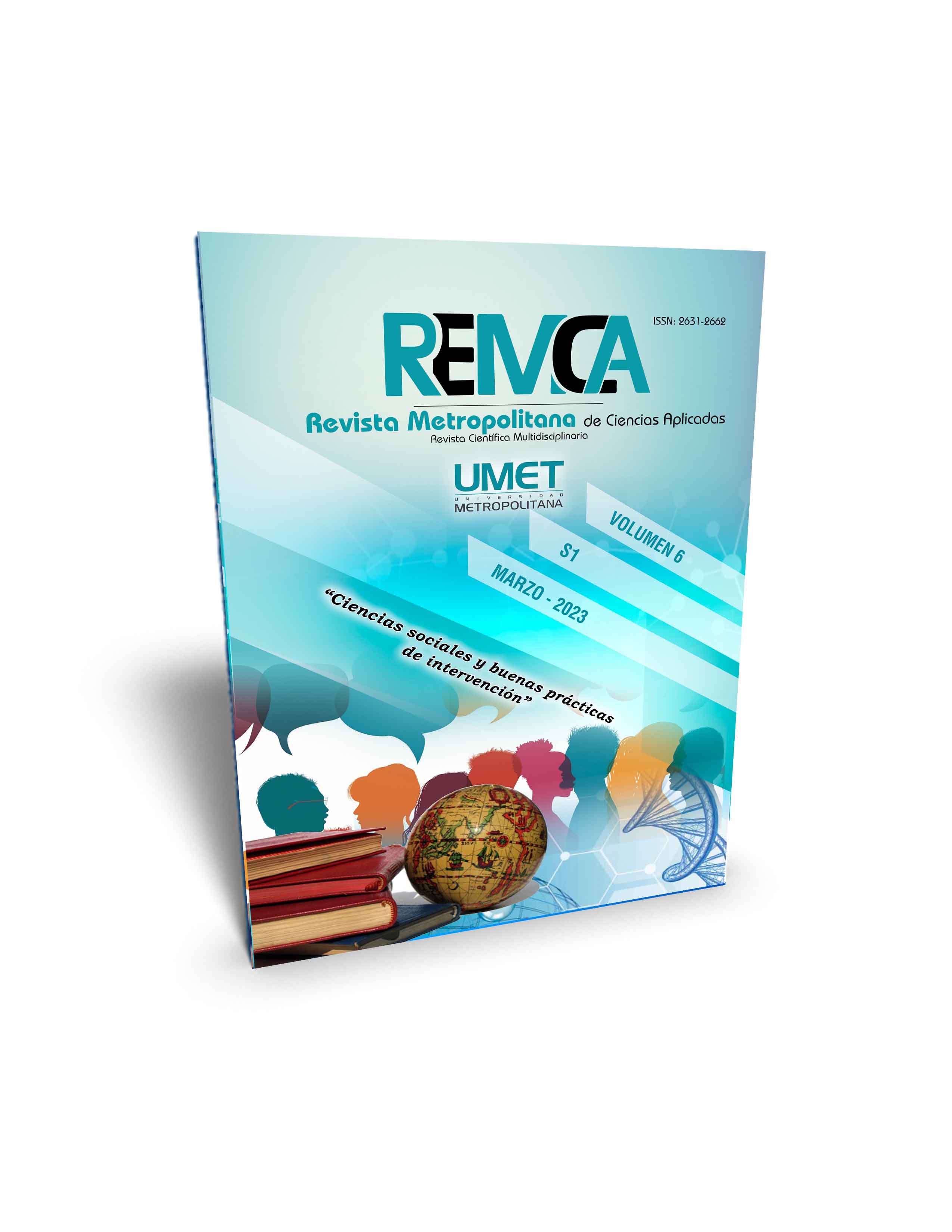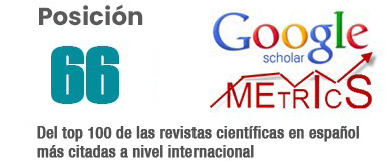Cultura local y aprendizaje de la lengua: su impacto en la motivación de la producción verbal en el aula secundaria de inglés
DOI:
https://doi.org/10.62452/cr9yv629Palabras clave:
Cultura local, ansiedad, actitud, motivación, destrezas oralesResumen
Dada la relación entre el lenguaje y la cultura, la incorporación de temas de cultura local en el aula de inglés como lengua extranjera pueden servir como herramienta para fomentar mayor comodidad entre los estudiantes al momento de hablar en público. Este artículo reporta los resultados de un estudio de métodos mixtos sobre el efecto de temas de cultura local en destrezas orales y motivación de un grupo de estudiantes en un colegio secundario en Cuenca, Ecuador. Los datos cuantitativos fueron obtenidos a través de un pre y post-test basado en la prueba de actitud y motivación de Gardner (1985). Los datos cualitativos fueron obtenidos mediante rúbricas, observaciones en clase, cuestionarios a estudiantes y entrevistas a profesores. Si bien los resultados cuantitativos no mostraron diferencias estadísticas significativas con relación a los puntajes del pre y el post-test de motivación, las observaciones de clase mostraron un incremento en la producción verbal de los estudiantes y su apreciación por temas locales. Se recomienda para futuras investigaciones una mayor cantidad de tiempo de intervención.
Descargas
Referencias
Alahem, B. (2014). Using Oral Presentation Projects to Help EFL Learners Reduce Speech Anxiety. EducationDOCBOX, 23.
Alakrash, H., Edam, B., Bustan, E., Armnazi, M., Enayat, A., & Bustan, T. (2021). Developing English Language Skills and Confidence Using Local Culture-Based Materials in EFL Curriculum, 1, 548 - 564.
Albán, T. J., & Cobo, S. J. (2016). Developing Speaking skill through integrating L1 and L2 Culture Strategy. (Bachelor Thesis). Universidad Técnica de Cotopaxi.
Bygate, M. (2001). Effects of task repetition on the structure and control of oral language. In, M. Bygate, P. Skehan, & M. Swain, Researching Pedagogic Tasks: Second Language Learning, Teaching, and Testing. Routledge.
Chin Lin, G. H. (2008). Pedagogies Proving Krashen’s Theory of Affective Filter. Hwa Kang Journal of English Language & Literature, (14), 113-131.
Creswell, J. W. (2009). Research Design Qualitative, Quantitative and Mixed Methods Approaches. SAGE Publications, Inc.
Doane, D., & Seward, L. (2016). Applied Statistics in Business and Economics. The Mcgraw-hill/Irwin.
Dörnyei, Z. (2005). The Psychology of the Language Learner: Individual Differences in Second. Lawrence Erlbaum Associates, Inc., Publishers.
Du, X. (2009). The Affective Filter in Second Language Teaching. Asian Social Science, 5(No.8), 162-165.
Ellis, R. (2000). Task-based research and language pedagogy. Language Teaching Research, 4(3), 193-200.
Freire, P. (1984). Pedagogy of the Oppressed. Continuum Publishing Corporation.
Freire, P. (1998). Pedagogy of Freedom. Rowman & Littlefield Publishers, Inc.
Gardner, R. (2001). Integrative Motivation: Past, Present and Future. Temple University Japan.
Gardner, R. C. (2005). Integrative motivation and second language acquisition. Canadian Linguistics Association. https://publish.uwo.ca/~gardner/docs/caaltalk5final.pdf
Gardner, R., & MacIntyre, P. D. (1992r). On the Measurement of Affective Variables in Second Language Learning. Language Teaching, 43(2), 157-194.
Keller, J. M. (1983). Motivational design of instruction. In, N. Hillsdale, Instructional-Design theories and models: An overview of their current status. (pp. 386-433). Instructional Design Theories and Models. Lawrence Erlbaum.
Knox, J., & Stevens, C. (1993). The collected works of L. S. Vygotsky: The Fundamentals of Defectology (Abnormal Psychology and Learning Disabilities) (Vol. 2). (R. W. Carton, Ed.) Plenum Press.
Krashen, S. (1985). The input hypothesis: Issues and implications. Longman.
Lessard-Clouston, M. (2018). Second Language Acquisition Applied to English Language Teaching. TesolPress.
Lind, D., Marchal, W., & Wathen, S. (2012). Statistical Techniques in Business & Economics. McGraw-Hill Irwin.
López-Gopar, M. E. (2019). Critical pedagogy and teaching English. In, S. G. Copland, The Routledge Handbook of Teaching English to Young Learners. (pp. 234-246). Routledge Handbooks.
Mackey, A., & Gass, S. M. (2005). Second Language Research Methodology and Design. Lawrence Erlbaum Associates Publishers.
Oxford, R. L. (1996). Language learning strategies around the world: Cross-cultural perspectives. Second Language Teaching & Curriculum Center, University of Hawai'i at Mānoa.
Pérez, L., Colón, A., & Arroyo, L. (2018). Development of the speaking skills by using significant input about the local culture in Barranquilla. REVISTA CEDOTIC, 3(1), 165-191.
Romrome, A., & Ena, O. (2022). Incorporating Local Culture in English Language Teaching for Papuan Junior High School Students. Journal of English Education and Teaching (JEET), 6(2), 207-221.
Saraswati, G., Hartoyo, H., & Fadwati, A. (2018). The role of Local Culture in English speaking classes. LLT Journal, 21(2).
Scott, S., & Palincsar, A. (2013). Sociocultural Theory. https://dr-hatfield.com/theorists/resources/sociocultural_theory.pdf
Sun, L. (2013). Culture Teaching in Foreign Language Teaching. Theory and Practice in Language Studies, 3(2), 371-375.
Tazhitova, G., Kurmanayeva, D., Kalkeeva, K., Sagimbayeva, J., & Kassymbekova, N. (2022). Local Materials as a Means of Improving Motivation to EFL Learning in Kazakhstan Universities. Educ. Sci, 12(9).
Thorne, S. (2000). Data analysis in qualitative research. https://www.researchgate.net/publication/261771899_Data_Analysis_in_Qualitative_Research
Torky, S. (2006). The Effectiveness of a Task- Based Instruction program in Developing the English Language Speaking Skills of Secondary Stage Students. Ain Shams University.
Vygotsky, L. S. (1987). Thinking and speech. Plenum Press.
Descargas
Publicado
Número
Sección
Licencia
Derechos de autor 2023 Margarita Reyes, Melita Vega (Autor/a)

Esta obra está bajo una licencia internacional Creative Commons Atribución-NoComercial-CompartirIgual 4.0.
Los autores que publican en la Revista Metropolitana de Ciencias Aplicadas (REMCA), están de acuerdo con los siguientes términos:
1. Derechos de Autor
Los autores conservan los derechos de autor sobre sus trabajos sin restricciones. Los autores otorgan a la revista el derecho de primera publicación. Para ello, ceden a la revista, de forma no exclusiva, los derechos de explotación (reproducción, distribución, comunicación pública y transformación). Los autores pueden establecer otros acuerdos adicionales para la distribución no exclusiva de la versión de la obra publicada en la revista, siempre que exista un reconocimiento de su publicación inicial en esta revista.
© Los autores.
2. Licencia
Los trabajos se publican en la revista bajo la licencia de Atribución-NoComercial-CompartirIgual 4.0 Internacional de Creative Commons (CC BY-NC-SA 4.0). Los términos se pueden consultar en: https://creativecommons.org/licenses/by-nc-sa/4.0/deed.es
Esta licencia permite:
- Compartir: copiar y redistribuir el material en cualquier medio o formato.
- Adaptar: remezclar, transformar y crear a partir del material.
Bajo los siguientes términos:
- Atribución: ha de reconocer la autoría de manera apropiada, proporcionar un enlace a la licencia e indicar si se ha hecho algún cambio. Puede hacerlo de cualquier manera razonable, pero no de forma tal que sugiera que el licenciador le da soporte o patrocina el uso que se hace.
- NoComercial: no puede utilizar el material para finalidades comerciales.
- CompartirIgual: si remezcla, transforma o crea a partir del material, debe difundir su creación con la misma licencia que la obra original.
No hay restricciones adicionales. No puede aplicar términos legales ni medidas tecnológicas que restrinjan legalmente a otros hacer cualquier cosa que la licencia permita.




